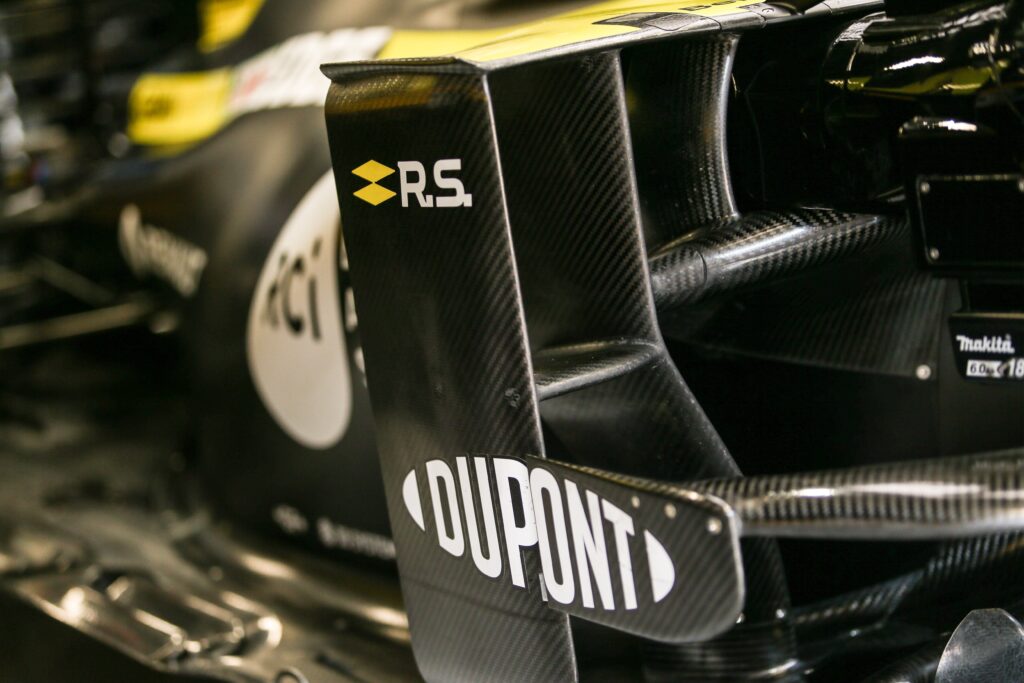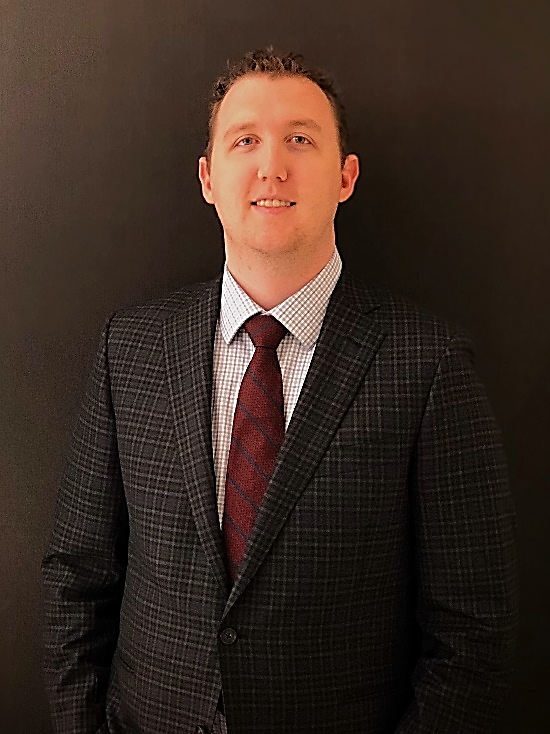
Renault F1 Team Film Day, Monday 17th February 2020. Barcelona, Spain.
Change in the automotive sector is speeding up to the blur of a Formula 1 car in full voice down the Circuit de Spa-Francorchamps strait, fueled by demands from consumers and policy makers alike for newer, faster, more sustainable and more advanced vehicles…without compromising on performance or safety.
In response to this challenge DuPont and the Renault DP World F1 Team have come together to co-innovate and unlock technological advancements that will define the future of F1 and help successfully transfer that technology to road cars, according to a joint statement.
Automotive Industries (AI) asked Carlo Fiorella, Global Market Manager of the newly refocused DuPont Automotive group, what impact the team has on the auto industry

Fiorella: The safety and construction (S&C) business at DuPont has supported the automotive part of the company and the wider industry for decades.
We ensure that our S&C experts bring forward new materials and technologies to meet and exceed the needs that OEMs have now and in the future.
What is new is our partnership – we’re taking over 100 years of expertise and are now applying it to a multi-year technical partnership specifically with the Renault DP World F1 Team. We’re working side-by-side to anticipate, research, develop and apply
the latest in engineering and materials science, with a core focus on innovations that will improve and enhance the sustainability, performance, safety and connectivity of the cars on the track.
We have two primary working groups comprised of Renault DP World F1 Team and DuPont technical team members.
One of these is based at Enstone (UK) with a focus on chassis items, with the other at Viry (France) with a focus on powertrain items. DuPont’s approach is to be market-focused solutions providers – with engineers from across three different business
units working to solve any challenges that the Renault DP World F1 Team encounter.
But the next-generation materials and technologies we’re producing won’t just stop at the track. Formula 1 has been at forefront of new technologies throughout history, with many developments directly benefiting the cars we drive on the road today, and we anticipate that any breakthroughs we make together will – if relevant – be adapted for use to improve our everyday vehicles.
AI: What is your primary focus?
Fiorella: Our partnership focuses on four key technical areas – lightweighting, safety, connectivity and sustainability. In terms of this season, our main goal with Renault DP World F1 Team is to unlock the full potential of their cars on the track, learn from the performances we see, and ensure we’re focusing on the right elements for research and development for new materials and technologies that can help drivers Daniel and Esteban achieve the results they deserve! It’s unfortunate that this season has been cut short, but with the new rules package getting pushed out for 2021-2022 we will continue to explore areas we can co-engineer newer and better technologies, and fast track product development and leverage what we are learning to continually improve.
Off the track, with emission regulations and the demand for more sustainable production vehicles, we don’t anticipate the rise in EV adoption to slow down. Higher energy-density batteries and e-motors create thermal management challenges in safety and efficiency, so we want to continue using our innovative technologies and solutions developed for the track and assess their uses within mass car production. For example, Nomex® slot liner insulation has allowed very high energy density e-motors to become an integral part of the motor racing technical landscape and this same Nomex® product has become the standard for passenger car electric motors that target ultra-high performance in the smallest, lightest, most reliable e-motor package.
AI: How will S&C Automotive Group work with OEMs and with Tier suppliers?
Fiorella: We work closely with all our partners across the full S&C team – acting more as strategic partners with the aim of helping customers solve challenges rather than offering off the-shelf solutions. This allows us to introduce materials and products from the aerospace industry or in defense (for example) to the work we do in automotive space. For example, 100% of all commercial aircraft utilize DuPont lightweight Nomex® honeycomb – a material with significant applications within motor racing and the automotive industry.
AI: What are your plans for the Nomex® and Kevlar® brands?
Fiorella: Nomex® is prominent in the personal protection apparel of racing drivers and crews – a trusted strong and lightweight product that is tested rigorously to ensure flame resistance in the event of accidents, and to stand up to the pressures and workload of the track and pitlane.
Both Nomex® and Kevlar® can be used widely throughout the vehicles themselves. Our Nomex® honeycomb structure offers vehicle bodywork with impressive structural rigidity at a very light weight – an essential balance for any motor racing team. These materials provide flame-resistance, great insulation and chemical resistance, all important factors when you consider the heat, complex electric systems and pressures that are present in a Formula 1 car during a race. With this in mind, Nomex® can also be found in crumple zones in the chassis – capable of absorbing and dissipating energy and ultimately offering increased protection for drivers in the event of a crash.
But it’s not just the bodywork where Nomex® is present. A paper version of the material is a highly effective electrical insulation which enables the hybrid-electric motors within Formula 1 to run hotter, faster, and longer with much higher efficiencies and reduced risk of malfunctions. In fact, the thermal efficiency of today’s Formula 1 engines sits around 55% – a nearly two-fold increase compared to the motors of the early 2000’s and helped in no small part due to advanced materials science and engineering.
Our ballistics grade protective fiber Kevlar® is also used widely throughout the sport. It is added to vehicle chassis composite structures requiring both strength and light weight, and is also used as the base material for fuel cells within the chassis structure – again providing strong and durable balance, without adding unnecessary weight to the vehicle.
AI: What innovations will come out of your partnership with Renault DP World F1 Team?
Fiorella: It’s incredible to see what significant advantages we can gain through small incremental changes and improvements in performance. As DuPont we benefit from the rapid feedback and agile way of working that Formula 1 demands. When you have a partner like Renault, it’s easy to build great relationships across both engineering groups, whether with Groupe Renault or the specific F1 race team. We’re able to get projects underway quickly – and our teams are always on the phone talking about new materials and technologies, or solving the complexities in ways to dissipate heat, electrically insulate and increase safety.
It is this rapid response culture within Formula 1 that is key for us at DuPont. We want to act as strategic partners to companies such as Renault DP World F1 Team, helping them solve challenges as they arise and develop solutions from scratch as needed.
Speed to market and agility are more important now than ever, particularly as we see developments such as electric vehicles going from a small single digit percentage now to potentially being 50% of all vehicles by the end the decade. It is this quick response time that we as material scientists and engineers need and want to maintain market leadership. By fast tracking product development in the extreme environments of Formula 1 racing we are able to create opportunities to accelerate this technology











More Stories
Automotive Industries (AI) Newsletter April 2025
GlobalLogic Pioneering Software-Defined Vehicles, AI Innovation, and Sustainable Solutions for the Future of Automotive Mobility
Cybord TCI – The Future of Manufacturing Integrity